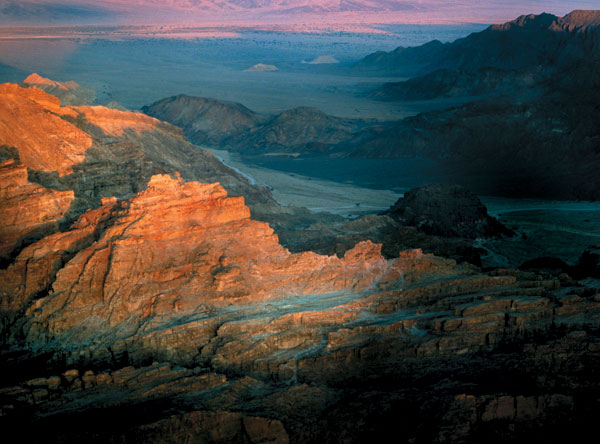
Did King David do battle with the Edomites? The Bible says he did. It would be unlikely, however, if Edom was not yet a sufficiently complex society to organize and field an army, if Edom was just some nomadic Bedouin tribes roaming around looking for pastures and water for their sheep and goats.
Until recently, many scholars took this position: In David’s time Edom was at most a simple pastoral society.1 This gave fuel to those scholars who insisted that ancient Israel (or rather, Judah) likewise did not develop into a state until a century or more after David’s time. Ancient Israel, they argued, was just like the situation east of the Jordan—no complex societies in Ammon, Moab or Edom.
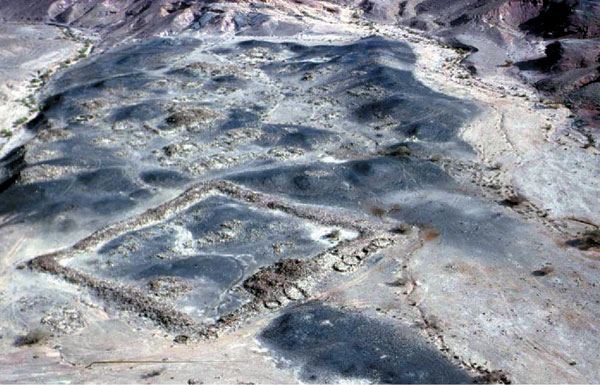
According to this school of thought, David was not really a king, but a chieftain of a few simple tribes. And of course Judah was not really a state because it never reached the level of social complexity that is the hallmark of a state.
The land of Edom figures largely in the Hebrew Bible; it is mentioned no fewer than 99 times. But just how much reliable history is embedded in these Biblical references?
This is rapidly becoming a contentious issue among archaeologists. Much of the debate centers on our recent excavations at Khirbat en-Nahas in the lowland region of Edom in southern Jordan, around 50 kilometers (30 miles) southeast of the Dead Sea. Our project represents the first attempt to apply radiocarbon-dating methods on a large scale to Edomite sites relevant to debates in Biblical archaeology.
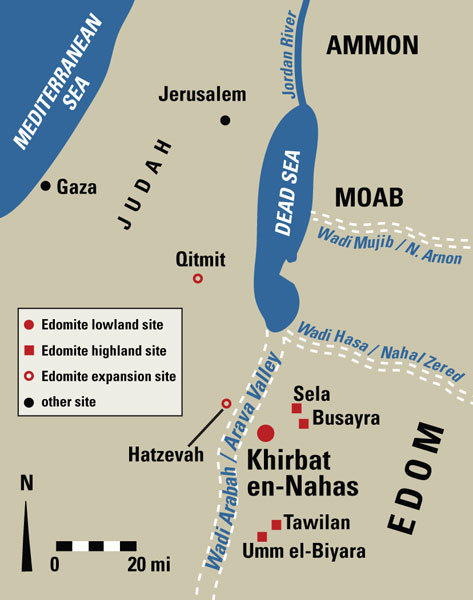
We have discovered a degree of social complexity in the land of Edom that demonstrates the weak reed on the basis of which a number of scholars have scoffed at the idea of a state or complex chiefdom in Edom at this early period—and, by extension, a state in Judah.
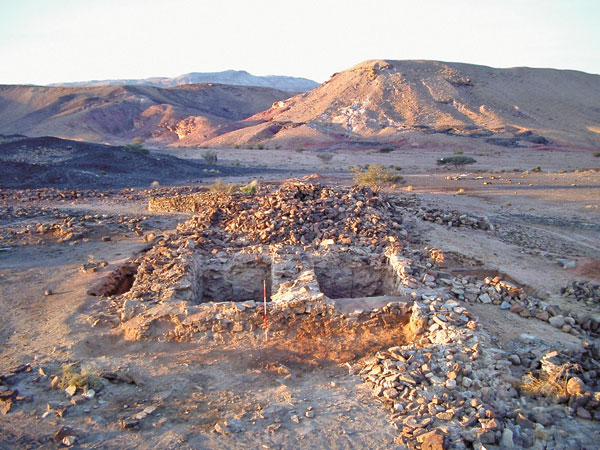
When we decided to work in the lowlands of Edom (in what is referred to as the Faynan district) back in 1997, we had no idea—or intention—of getting involved in the minefields that characterize controversies in Biblical archaeology. This was to be an anthropological archaeology expedition to explore the role of early mining and metallurgy on social evolution from the beginnings of agriculture and sedentary village life from the Pre-pottery Neolithic period (c. 8500 B.C.E.) to the Iron Age (1200–500 B.C.E.) in Jordan. But archaeologists don’t always find what they are looking for, and what we have found has certainly thrown us into the deep waters of Biblical history.
By 2002 we had surveyed and sampled metallurgical sites in the area. In the cool of fall that year, we decided to mount a major archaeological expedition at the largest Iron Age site in the region: Khirbat en-Nahas (“ruins of copper,” in Arabic).
Khirbat en-Nahas is located along Jordan’s Wadi al-Guwayb (wadi is Arabic for a dry stream valley; the Hebrew equivalent is nahal). The Wadi al-Guwayb drains into the Wadi Arabah (Nahal Arava, in Hebrew), which today separates modern Jordan and Israel south of the Dead Sea. The Wadi Arabah, in turn, is part of the greater African Rift that extends from Tanzania and Olduvai Gorge in Africa, home of some of the earliest fossil evidence for early humans, up through the Red Sea and Gulf of Aqaba, to the Jordan Valley and beyond.
Edom occupies the territory of southern Jordan (south of the adjacent ancient kingdoms of Ammon and Moab). As early as Genesis we learn that Esau, Jacob’s twin brother, is the ancestor of the Edomites; the text adds that Edom is in the hill country of Seir (Genesis 36:9). Egyptian texts indicate that the land was called Seir before it became Edom.2
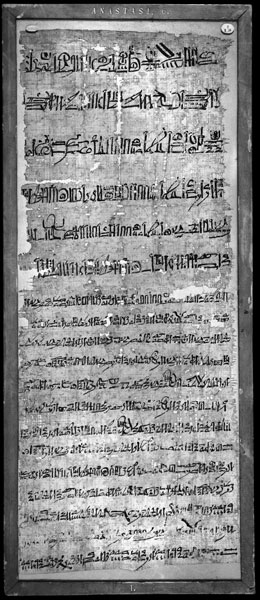
Edom is a Semitic term for “red.” According to the Bible (Genesis 25:25), Esau emerged red from Rebekah’s womb; presumably, this is how the Edomites got their name. They are, literally, the “red ones.” The name might also have something to do with the red hue of the spectacular barren landscape in the sandstone mountains of Edom.
On the Israelites’ way from Egypt to the “Promised Land,” presumably at the end of the Late Bronze Age around the time of Ramesses II (c. 1279–1213 B.C.E.), Moses wanted to pass through the land of Edom and requested permission from the king of Edom:
Allow us, then, to cross your country. We will not pass through fields or vineyards, and will not drink water from wells. We will follow the king’s highway, turning off neither to the right nor to the left until we have crossed your territory.
(Numbers 20:17)
The Edomite answer was a peremptory “no”: “And Edom went out against them in heavy force, strongly armed. So Edom would not let Israel cross their territory, and Israel turned away from them” (Numbers 20:20–21). A standard Bible dictionary, however, states that “No archaeological evidence of a fortified and organized [Edomite] settlement in this time has yet been found.”3 This statement may now have to be modified.
According to the Biblical chronology, several centuries after the Exodus, Saul, David and Solomon all fought the Edomites (1 Samuel 14:47; 2 Samuel 8:13–14; 1 Kings 11:14), as did later kings. The major military action, however, was between David and the Edomites. He campaigned there early and often—supposedly during the early tenth century B.C.E.
Is all this entirely fictional?
The earliest mention of Edom appears not in the Bible, but in Egyptian records from the time of Pharaoh Merneptah (c. 1224–1214 B.C.E.) in the Papyrus Anastasi VI, where an Egyptian frontier official notes:
We have finished letting the Bedouin tribes of Edom pass the Fortress [of] Mer-ne-ptah Hotep-hir-Maat . . . to keep them alive and to keep their cattle alive.4
One of the reasons that Edom has been archaeologically misunderstood even by scholars is because of what we refer to as a “highland bias.” Geographically, Edom can be divided into three parts. The first two parts are in southern Jordan, mostly southeast of the Dead Sea: (1) the highlands; and (2) the lowlands. The third part is west of the Arabah in what is now the Negev of modern Israel, which Edom conquered in the eighth to sixth centuries B.C.E. and was the locale of many Edomite wars.a But this part of Edom came later and is not involved in our present inquiry.
The Edomite highlands are a mountainous plateau that includes such well-known sites as Petrab and lesser-known ones linked to the Edomites. The highlands are composed of precipitous rock walls of Nubian sandstone that are so rugged that ascent sometimes requires technical climbing equipment.5
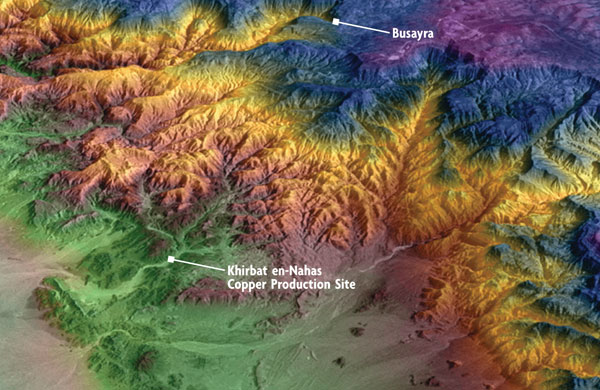
The prophet Jeremiah, who is generally thought to have lived during the last half-century of Israel’s nationhood (c. 640–587 B.C.E.), provides a graphic portrait of an Edomite highland settlement:
The horror you inspire has deceived you, and the pride of your heart, you who live in the clefts of the rock, who hold the height of the hill. Though you make your nest as high as the eagle’s, I will bring you down from there.
(Jeremiah 49:16)
Much of this plateau is covered with relatively rich, reddish-brown Mediterranean soils with 200 to 600 millimeters (about 8–24 inches) of average annual rainfall, making it highly desirable land suitable for dry-farming6—a typical Near Eastern agricultural pursuit as early as the Neolithic period. In winter, however, conditions in the highlands can be brutal, with freezing temperatures and snow.
A remarkable change occurs in the geology, topography, climate and vegetation as one descends from this high plateau to the lowlands. The drop in elevation is particularly dramatic—more than 1,600 meters (5,000 feet), to below sea level. Major wadis, rich in history, cut deeply through the Edomite plateau and flow westward to the Wadi Arabah. Some of the seasonal drainages include the Wadi Dana, Wadi Ghuwair and Wadi Ashaqer among others (that turn into the Wadi Faynan and then the Wadi Fidan), as well as the Wadi Musa (coming down from Petra). As the descent approaches the semi-arid zone, the annual rainfall drops to 200 to 300 millimeters (8–12 inches). In the desert zone, it reaches 25 to 150 millimeters (1–6 inches).
While the highlands boast a narrow corridor of good agricultural land on the rugged plateau, the lowlands contain one of the richest sources of a natural substance in the eastern Mediterranean: copper ore.
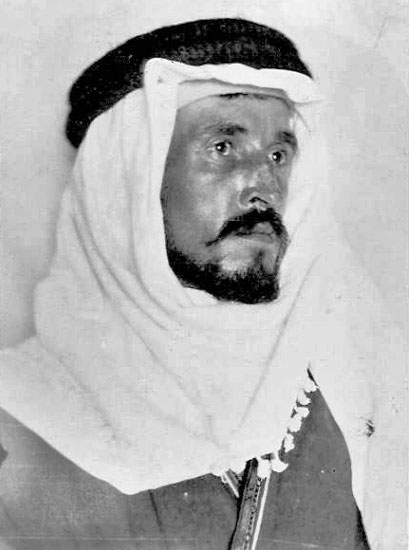

In recent studies concerning the emergence of the kingdom of Edom, emphasis has focused on the Edomite plateau. To understand the emergence of the Edomite kingdom, we are told, we must look to the rise of the Assyrian empire in the latter half of the eighth to the seventh centuries B.C.E. and the trade it facilitated, especially the spice trade with Arabia. Unfortunately, the role of copper production and its control has often been unappreciated by scholars. Our work at Khirbat en-Nahas, however, demonstrates that control of copper production was perhaps the single most important factor in the birth of the Edomite state, and it came about considerably earlier than previously thought.
We were not the first to investigate Khirbat en-Nahas. We were preceded by a number of famous scholars. John Lewis Burckhardt reached Petra disguised as a Bedouin on August 22, 1812. At the beginning of the 20th century, the Czech orientalist Alois Musil (1868–1944) rode over 20,000 kilometers (13,000 miles) by camel, carrying out, among other things, a topographic and historical survey of Edom. The American archaeologist Nelson Glueck (1901–1971)—who had studied under William Foxwell Albright (1891–1971), one of the founding fathers of scientific archaeology in the region—carried out a series of remarkable and extensive archaeological surveys in Ammon, Moab and Edom between 1932 and 1947. Traveling by camel, donkey and on foot, Glueck discovered more than 1,500 of the most important archaeological sites in Jordan. Glueck made some serious errors, but his technical studies and surveys were of the highest quality in those days and are still essential reference works for any archaeologist working in Jordan today.
As Glueck was getting started with his survey, a German engineer and explorer named Fritz Frank had already visited a number of important sites including Khirbat en-Nahas, as well as numerous copper mines around the Wadi Arabah. By the 1980s, technical studies of metallurgy at this and other sites in the region were carried out under Andreas Hauptmann of the German Mining Museum in Bochum.
Since the 1960s, Edomite archaeology has been dominated by the work of British archaeologist Crystal Bennett. She worked exclusively on the highland plateau, however. Bennett’s surveys and excavations at highland sites have established a benchmark for understanding Edomite history. However, her work is deeply flawed in two respects. First, the dating of these highland sites is based on a single seal impression and is unreliable. Second, the emphasis on highland sites largely ignores the social character of Edomite society as reflected in the lowlands. These seemingly minor points have important historical ramifications.
During Bennett’s work at Umm el-Biyara, located high up on a small mesa overlooking Petra, her team discovered an Edomite seal impression inscribed qws g[br]/mlk ‘[dm], “Qos-Gabr King of Edom.” To date, this is one of only a few examples of an Edomite king’s seal impression. This Qos-Gabr (or Qaus-gabri) is usually associated with the king mentioned in two contemporary Assyrian inscriptions. This is not necessarily the case, because it was a common practice in the ancient East—especially in the royal families—to name sons after their forefathers, so Qos-Gabr of the seal might be much older than the one mentioned in the Assyrian annals. References in the Assyrian records provide an absolute date for the Qos-Gabr mentioned there: the seventh century B.C.E.7 On this basis, Bennett and other scholars dated the pottery assemblage in which the Qos-Gabr seal impression was found to the seventh century B.C.E.8 They dated earlier and later ceramic assemblages in relation to that, concluding that there was no early Iron Age occupation in Edom at all, that is, nothing from the 12th to 9th centuries B.C.E.—in Biblical terms, the time of the Israelite entry into Canaan, the United Monarchy and the early years of the Divided Monarchy.
There are problems with the dating based on this single Edomite seal impression. Most important, the pottery assemblage found with the seal impression of Qos-Gabr was unstratified. Therefore, it cannot reliably be used as a benchmark, even for relative dating purposes, especially when it is used as the lynch pin to date all Iron Age ceramic assemblages in Edom. Moreover, no radiocarbon analysis (Carbon-14 dating) was performed on the organic substances in the assemblage at Umm el-Biyara or any other highland site that would have provided an unbiased external dating control. Despite these shortcomings, some scholars forced the chronology of Edom into the end of the Iron Age (eighth–seventh centuries B.C.E.).
Moreover, Bennett’s analysis is based only on evidence from highland sites. It is our contention, however, that the key to understanding Edomite state formation lies in the lowlands, near the sources of rich copper ore.
There is no better place to study the area full of copper ore than Khirbat en-Nahas. Although we were not the first to work here,9 our work has been the most comprehensive and has naturally used methodologies not available to earlier investigators. Thus, our intensive systematic foot surveys along the wadis around the site identified 13 previously unknown Iron Age copper mines. Some of the galleries in these mines penetrate 65 meters (200 feet) into the hillsides. Many have air ducts dug more than 8 meters (25 feet) from the surface to bring air into these underground networks.
In two wadis near Khirbat en-Nahas we found more than 90 sites.10 The most-frequently represented archaeological period at these sites, based on the pottery, is the Iron Age.
Giving credit where credit is due, Nelson Glueck, although examining only the larger Iron Age sites in the area, suggested that Khirbat en-Nahas was the center of mining and smelting sites in the vicinity. Based on the pottery sherds he collected, he suggested that the most important periods of activity were during and shortly after the reign of King Solomon.11 Glueck’s observations in the 1930s were based solely on the relative chronology afforded by pottery sherds collected from the surface. With the exception of his unpublished excavations at Tell el-Kheleifeh near Aqaba, there simply were no stratified contexts of pottery assemblages from excavated sites in Jordan at that time. Now our excavations at Khirbat en-Nahas are providing support for many of Glueck’s insights.
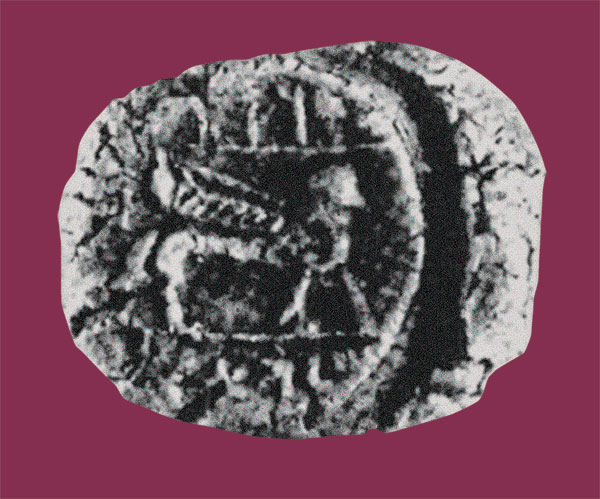
The most important structure we excavated at Khirbat en-Nahas was a large fortress 73 by 73 meters (about 240 x 240 feet) with existing walls up to 1.2 meters (4 feet) high, already identified by Glueck and, before him, Musil. This makes Khirbat en-Nahas one of the largest Iron Age fortresses in the deserts of Jordan, Israel and Sinai. We sunk our first probe into the area that Glueck long ago suggested was the gateway to the fortress. Again, Glueck proved correct; the gateway indeed lay buried there. In our excavation of the gate complex, we identified seven separate strata. The gatehouse initially comprised a typical four-chamber gate, like those found at many Iron Age sites such as Megiddo, Beersheva and Ashdod in modern Israel. We excavated only two of these gate chambers, but we plan to sample more in the future. Each of the four guardrooms—two on each side—was approximately 3 meters (10 feet) square. The passage between the guardrooms was approximately 3.7 meters (12 feet) wide. All of the pottery associated with this massive structure dated to the Iron Age.
But how early was the date in the Iron Age, which extends from about 1200 B.C.E. to the destruction of ancient Israel by the Babylonians in 586 B.C.E.?
The only way to firmly anchor the material culture assemblages of Edom in a reliable chronology is through the application of objective, high-precision radiocarbon dating. That is what we have tried to do with the stratified assemblages from the gatehouse and other structures at the site, which, fortunately, included large amounts of charcoal, an organic substance that can be radiocarbon tested. The Jordan Department of Antiquities allowed us to export the charcoal samples to the Oxford Radiocarbon Accelerator Unit in England. Working in the shadow of the major Iron Age excavations up on the highland plateau, we assumed that the dates might be late in the Iron Age—in the eighth, seventh and perhaps sixth centuries B.C.E. Instead, the results lend support to Glueck’s original dating of the early period of the site to the tenth century B.C.E., the time of the kingdoms of David and Solomon, in Biblical terms. The lowest stratum (our A4a), resting on bedrock before the gate was founded, was dated by radiocarbon to the late-11th or early-10th century B.C.E. Above this is our stratum A3—the surface connected to the original gate structure—which dates to the early 10th century B.C.E. The gate is therefore contemporaneous with similar 10th- and 9th-century B.C.E. fortifications in what is today the Negev of modern Israel.
To confirm the Carbon-14 results from Oxford University, we processed additional charcoal samples at the Centre for Isotope Research in Groningen, the Netherlands, where we received similar dates.12 For each charcoal sample, we cut out and tested the outermost one or two tree rings, closest to the bark. This insured that we were dating only one or two of the most recent growth rings rather than a clump of 30 to 100 rings. Had we not done this, we would have injected an error margin of 30 to 100 years into our dating samples—something we had to avoid in order to attain sub-century dating, which is crucial for solving Biblical archaeology problems.
In the strata just above this (our A2b and A2a), reorganization of metal production occurred, and the gatehouse went out of use in the mid-ninth century B.C.E. The main passage or roadway through the gate was carefully blocked up with a fill of rubble and sealed in place by well-constructed walls at each end of the passage. The guardrooms lost their original function. Blocking the old gate were large globs of liquid slag—runoff from the smelting furnaces—that had formed thick rock-like sheets containing organic material, which could also be tested by radiocarbon. Charcoal and other metallurgical debris with testable organic material were recovered in carefully stratified contexts in the blocked-up gate.
The radiocarbon dates confirm that during the mid-ninth century B.C.E., the gatehouse and probably the fortress ceased to have a military function, but they were part of large-scale metal production activities at the site.
After what may have been a brief abandonment phase in the gatehouse area, a second metal-processing layer (our stratum A2a) was superimposed on the first. This represents a late-ninth-century B.C.E. phase of metal production.13 According to 2 Kings 8:20, the Edomites revolted against Judahite rule in the mid-ninth century at the time of King Jehoram (also called Joram). It is possible that the abandonment of the tenth-century B.C.E. fortress and the intensification of metal production in the ninth century B.C.E. at Khirbat en-Nahas is a reflection of self-rule following the Edomite revolt.14
In addition to the fortress, the ten-hectare (24-acre) site was covered with walls that we were best able to see from a French Puma helicopter, courtesy of the Royal Jordanian Air Force. From the air, we could see hundreds of wall lines representing the collapsed buildings of the workers who once processed copper ore at the site. Did these buildings also date to the Iron Age? Metal workers during the early part of the Iron Age, c. 1200–900 B.C.E., must have had the organizational skill, as well as the technical knowledge, to mass produce copper on a scale that turned out thousands of kilograms of black copper slag waste so clearly visible from the air and on the ground.
Even before the founding of the gatehouse and the fortification walls, significant metallurgical activities took place in the area during the 12th to 11th centuries B.C.E. From the earliest level of a worker’s building that we excavated in Area S (Stratum S4), we obtained a radiocarbon date from the 12th to 11th century B.C.E. This dating is confirmed by Egyptian scarabs from our excavation dating to this period.15

The gatehouse (and presumably the fortification walls) were then constructed at the beginning of the tenth century B.C.E. By the middle of the ninth century B.C.E., however, the gatehouse and fortress had gone out of use, and the area was used for intensive smelting and metal-working activities. Then, after a relatively brief abandonment of the area, the gatehouse and its immediate surroundings were again used but for a non-military purpose: copper smelting operations.
Four large towers stand southeast of the Khirbat en-Nahas fortress. These could date as early as the Late Bronze Age (c. 1400–1200 B.C.E.) or to various times in the Iron Age. While only future excavations will determine this, the dating of these towers could be important for testing our historical reconstruction of Iron Age Edom.
Overall, however, our excavations at Khirbat en-Nahas push the dates of the Iron Age in Edom back by some 100 to 400 years, from the currently accepted 8th to 7th centuries B.C.E. to the 12th to 9th centuries B.C.E.
The application of high-precision radiocarbon dating to the Iron Age deposits at the site has now drawn us into discussions concerning historical aspects of the Bible. As we should have known, you can’t do Iron Age archaeology in our region without reference to the Bible.
Heretofore, Iron Age archaeology in Edom has focused on the highland plateau, far away from this rich mineral-resource zone. Consequently, the importance of copper production and its control in the formation of the Edomite kingdom was widely undervalued. This “highland-centric” view of archaeology in Edom misled many archaeologists to suppose that the Iron Age in Edom began in the 7th or possibly 8th centuries B.C.E. Our surveys and excavations have now pushed that date back to the 12th to 9th centuries B.C.E., back to Nelson Glueck’s discussions of more than 60 years ago of early Edomite interaction with neighboring polities such as Israel.
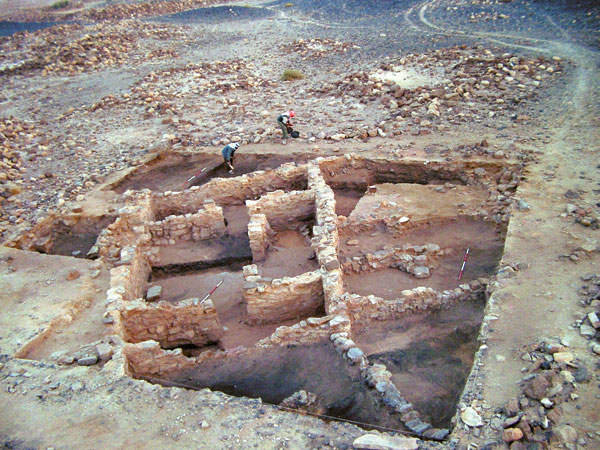
Can we say definitively that the kingdom of Edom had its origins in the lowlands of Edom and that control of copper was the chief catalyst for the rise of social complexity? Not yet. However, the excavations and radiocarbon dates from Khirbat en-Nahas have drawn the lowlands into the center of the debate.
We may look with new eyes at the reference to Edom in Genesis 36:31: “These are the kings who reigned in the land of Edom, before any king reigned over the Israelites.” This indicates that, for the Biblical author, Edom was a state with kings (or very-high-ranking chiefs) even before ancient Israel. Historical reality can often be found in the Bible’s snippets, in its minor clauses that are almost footnotes. This statement does not support a particular point of view. There is no advocacy behind it or many of the other statements concerning Edom, such as the revolt mentioned earlier. On the contrary: It gives Edom a “state” or complex society with a “king” even before the writer’s own country. There is therefore no reason to doubt the historicity of this almost off-hand Biblical remark. It most probably reflects a historical process—namely that a complex society or an archaic state of some kind evolved in Edom before there was one in ancient Israel. The Bible is telling us that Edom may have developed a complex society bordering on statehood as early as the Late Bronze Age (c. 1400–1200 B.C.E.).
Anthropologists, archaeologists and historians have struggled mightily to define and identify from archaeological remains what makes a state-level society.16 They are doggedly looking for the litmus test that will distinguish a state from a chiefdom. When the Bible mentions a king, we tend to assume we know how he ruled, how much territory he controlled and whether he could field an army. However, it isn’t so simple. In fact, the anthropological record teaches us that societies in which “chiefs” and “kings” functioned fall along a continuum of complexity that cannot be easily divided into neat categories. Thus, the dividing line between a complex chiefdom and a petty kingdom is unclear. And trying to make this distinction on the basis of a mute archaeological record is even harder.
With regard to the Edomites that the Bible says David fought and interacted with, as well as David’s role as king of ancient Israel, the question is not whether Edom or Israel was a state or a chiefdom, but whether, based on the archaeological evidence, these societies had the levels of social complexity needed to field armies, construct monumental buildings and carry out technologically intensive industrial activities. In these terms, whether a society is a super chieftain or a petty kingdom is relatively unimportant.
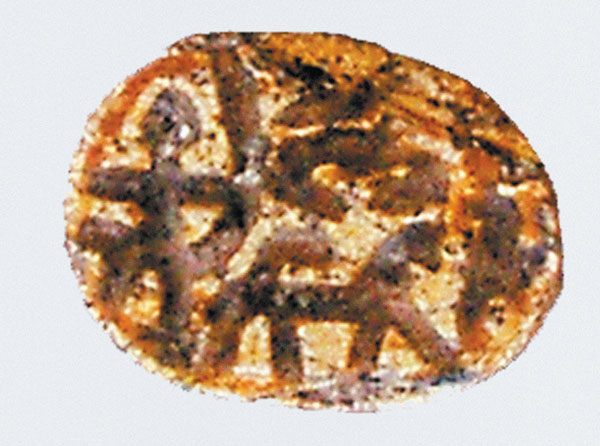
What seems clear is that, at least by the beginning of the Iron Age, Edom was a complex society with the ability to construct major buildings, defend itself with strong fortifications and create a technologically sophisticated organization to draw copper from ore and thereafter to manufacture objects with it. If it could do this, there is no reason to doubt that it could also field an army.
Edom was always a kind of tribal society, even at its most advanced period, when highland sites like Busayra and Umm el-Biyara were occupied in the eighth to sixth centuries B.C.E. But it was also a complex society quite early in the Iron Age, if not toward the end of the Late Bronze Age. Looking at a broader canvas, when the center of eastern-Mediterranean copper production in Cyprus collapsed, along with the rest of civilizationc at the end of the Late Bronze Age (c. 1400–1200 B.C.E.), Edom’s copper production—which had flourished previously during the Early Bronze Age (c. 3600–2000 B.C.E.)—was resurrected. Control of lowland-Edom copper production at the beginning of the Iron Age provided a catalyst for the emergence of Edom as a “super chiefdom,” if not as a state supported by a complex copper-mining and processing apparatus.
In this context, the Biblical references to the Edomites, especially their conflicts with David and subsequent Judahite kings, garner a new plausibility.
MLA Citation
Footnotes
See Itzhaq Beit-Arieh, “Edomites Advance into Judah,” BAR 22:06.
See Philip C. Hammond, “New Light on the Nabataeans,” BAR 07:02.
See Avner Raban and Robert R. Stieglitz, “The Sea Peoples and Their Contributions to Civilization,” BAR 17:06.
Endnotes
E.g., Israel Finkelstein and Neil Asher Silberman, The Bible Unearthed (NY: Free Press, 2001), p. 68 (“Archaeological investigations indicate that Edom reached statehood only under Assyrian auspices in the seventh century B.C.E. Before that period it was a sparsely settled fringe area inhabited mainly by pastoral nomads.”) and p. 40 (“From the Assyrian sources we know that there were no real kings and no state in Edom before the late eighth century B.C.E. Edom appears in ancient records as a distinct entity only after the conquest of the region by Assyria … The archaeological evidence is also clear: the first large-scale wave of settlement in Edom accompanied by the establishment of large settlements and fortresses may have started in the late eighth century B.C.E. but reached a peak only in the seventh and early sixth century B.C.E.”).
Seir is used for Edom in the mid-14th century B.C.E. in an el-Amarna text (el-Amarna letter 288, line 26) (See Kitchen, K.A. 1992. “The Egyptian Evidence on Ancient Jordan,” in P. Bienkowski, ed., Early Edom and Moab—The Beginning of the Iron Age in Southern Jordan (Sheffield: J.R. Collis Publications, p. 26) and in an Egyptian list from the time of Ramesses II (first half of the 13th century B.C.E.) found at ‘Amarah West (H.W. Fairman, “Preliminary Report on the Excavations at ‘Amarah West, 1938–39,” Journal of Egyptian Archaeology 25 [1939], pp. 139–144). Deuteronomy 2:12 states that “Seir was formerly inhabited by the Horites; but the descendants of Esau dispossessed them, wiping them out and settling in their place.”
S.v. “Edom” in David Noel Freedman, ed., Eerdmans Dictionary of the Bible (Grand Rapids, MI: Eerdmans, 2000).
For the Papyrus Anastasi VI, see J.B. Pritchard, Ancient Near Eastern Texts Relating to the Old Testament, (3rd. ed.) (Princeton: Princeton Univ. Press, 1969), p. 259. This is the same pharaoh associated with the famous Merneptah or Israel Stele (See H. Shanks, W.G. Dever, B. Halpern and P.K. McCarter, Jr., The Rise of Ancient Israel [Washington, D.C.: Biblical Archaeology Society, 1992]).
For an outstanding guidebook to all the wadis of Biblical Edom, Moab and Ammon, see I. Haviv, Trekking and Canyoning in the Jordanian Dead Sea Rift (Israel: Desert Breeze Press, 2000).
Piotr Bienkowski, “The Edomites: The Archaeological Evidence from Transjordan,” in Diane V. Edelman, ed., You Shall Not Abhor an Edomite for He Is Your Brother: Edom and Seir in History and Tradition, Archaeological and Biblical Studies 3 (Atlanta: Scholars Press, 1995), pp. 44–45.
M.F. Oakshott, “A Study of the Iron Age II Pottery of East Jordan with Special Reference to Unpublished Material from Edom” (Unpublished Ph.D. thesis, 1978); M.F. Oakshott, “The Edomite Pottery,” in J.F.A. Sawyer and D.J. A. Clines, eds., Midian, Moab and Edom: The History and Archaeology of Late Bronze and Iron Age Jordan and North-West Arabia (Sheffield: JSOT Press, 1983); S. Hart, “The Archaeology of the Land of Edom” (Ph.D. thesis, Macquarie University, 1989).
Our work has built on the pioneering archaeometallurgical investigations in the Faynan region by Professor Andreas Hauptmann (German Mining Museum) and Mohammad Najjar (Department of Antiquities of Jordan) and Volkmar Fritz’s initial soundings at Khirbat en-Nahas. The 2002 excavations at Khirbat en-Nahas were carried out under the auspices of the University of California, San Diego and the Department of Antiquities of Jordan (DOAJ) as part of the Jabal Hamrat Fidan Regional Archaeology Project. We are grateful to Dr. Fawwaz al-Khraysheh, director general of the Department of Antiquities of Jordan, for his support, the Royal Society for the Conservation of Nature in Jordan for permitting us to work in the Dana Nature reserve where Khirbat en-Nahas is located, Dr. Pierre Bikai, then director of the American Center of Oriental Research (ACOR) in Amman for his logistical support. The senior principal investigator of the project was Professor Thomas E. Levy (UCSD); co-principal investigator and ceramics specialist, Dr. Russell B. Adams (Ithaca University); and co-director, Dr. Mohammad Najjar (Department of Antiquities of Jordan). The following individuals served as key staff members of the project: Dr. James D. Anderson, senior surveyor (North Island College, BC); Professor Andreas Hauptmann, archaeometallurgist (German Mining Museum); Neil Smith, Geographic Information Systems (GIS) and ceramics analyst (UCSD); Adolfo Muniz, digital archaeology coordinator and archaeozoologist (UCSD); Yoav Arbel, field supervisor (UCSD), Lisa Soderbaum, field supervisor; Elizabeth Monroe, field supervisor; Anthony Arias, Boomer (Goa); Sarah Malena, Victoria Sears, Beccah Landman, assistant field supervisors; Lynne Murone-Dunn and Stacie Wilson, field lab supervisors; the late Professor Alan Witten, geophysicist (University of Oklahoma); Dr. John Grattan, geoarchaeologist (University of Wales, Aberystwyth); Kristiana Smith, photography (San Diego), Aladdin Madi, camp manager (Jordan); Dr. Caroline Hebron, illustrator (UK); Marion Riebschläger, conservation (Germany); and Alina Levy, Financial (USA). We are grateful to all these individuals for their help.
T.E. Levy, R.B. Adams, M. Najjar, J. van der Plicht, N.G. Smith, H.J. Bruins, T. Higham, “Lowland Edom and the High and Low Chronologies: Edomite State Formation, the Bible and Recent Archaeological Research in Southern Jordan,” in T.E. Levy and T. Higham, eds., The Bible and Radiocarbon Dating—Archaeology, Text and Science (London: Equinox Publishing, Ltd, 2005). The full publication of the Groningen dates appears here. We are indebted to Drs. Tom Higham, Hans van der Plicht and Hendrik Bruins for their collaboration on this radiocarbon-dating project.
The one earlier radiocarbon date came from an earlier piece of charcoal that was mixed in with material from the later stratum.
For a more in-depth discussion of this hypothesis, see T.E. Levy, “‘You shall make for yourself no molten gods’—Some thoughts on Archaeology and Edomite Ethnic Identity” in S. Dolansky, ed., Sacred History, Sacred Literature: Essays on Ancient Israel, the Bible, and Religion in Honor of R.E. Friedman on His 60th Birthday (Winona Lake, IN: Eisenbraun, in press).
These scarabs indicate that other carbon samples dating to the tenth–ninth centuries B.C.E. came from later contexts and that the stratum should indeed be dated to the Iron I period. We will resolve this problem, however, only through additional controlled excavations in other building complexes with larger exposures of each stratum.


